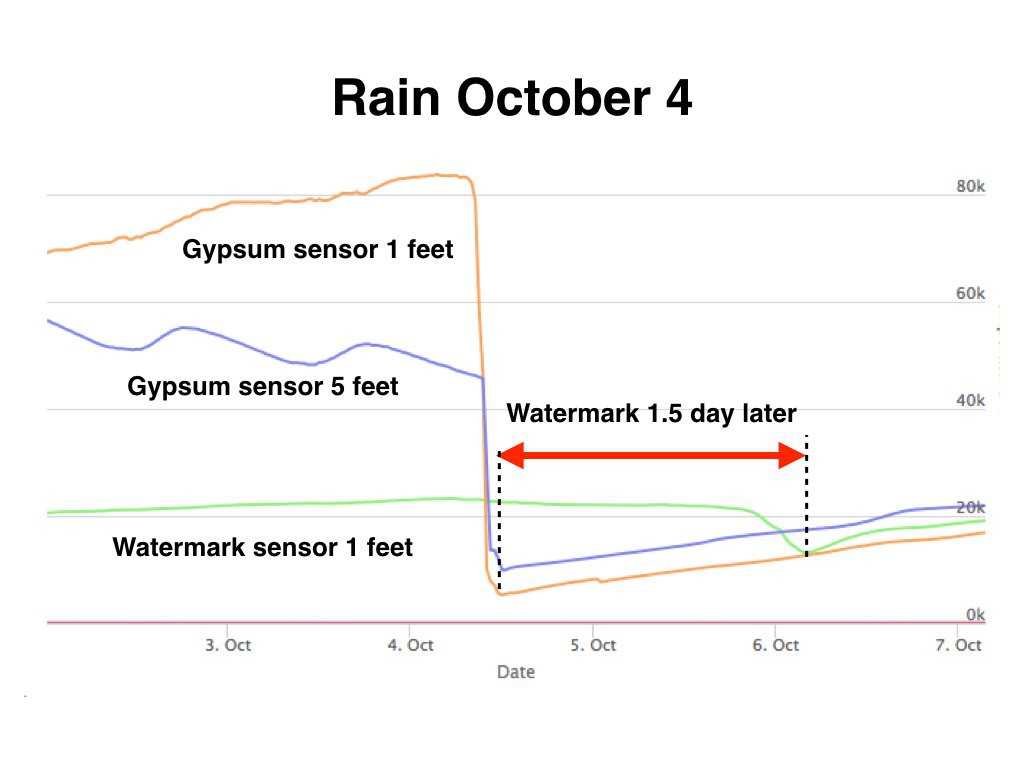Rain September 16
We had rain in Temecula this week. Hopefully the first of many more to come this winter.
Interesting to see how this shows up at the sensors.
Sensor 3, @ 5 feet depth shows day to day variation with each small daily irrigation event.
Sensor 1 and 2 are installed at shallow depth of one foot. The shallow sensors register the rainwater, but the water does not stay in the top layer for long and the moisture goes back to the level before the rain.
From how it appears, the rain water descends quickly through the soil, having most impact on the moisture at 5 feet (below the active root zone).
A live feed from the vineyard soil moisture can be seen here: https://thingspeak.com/channels/37248

Update: Rain October 4
After harvest, I had the chance to reduce irrigation and monitor the sensors at soil moisture close to "ludicrous" dryness levels. The gypsum sensors keep working fine at low soil moisture, but the Watermark sensor loses sensitivity when operated above 10kOhm sensor resistance. When rain came on October 4, the gypsum sensors (orange and blue lines) immediately registered this event with a sharp drop in resistance, while the Watermark sensor (green line) responded with a shallow resistance drop 1.5 day later.

Comparing both type of sensors
The Watermark is better at registering changes in moisture at high moisture levels (< -15kPa) , and the DYI gypsum sensors have a better responsiveness at low moisture levels (>-50kPa). For the range where irrigation should be initiated, -20kPa to -60kPa,both type of sensors can work well.
 Reinier van der Lee
Reinier van der Lee
Discussions
Become a Hackaday.io Member
Create an account to leave a comment. Already have an account? Log In.